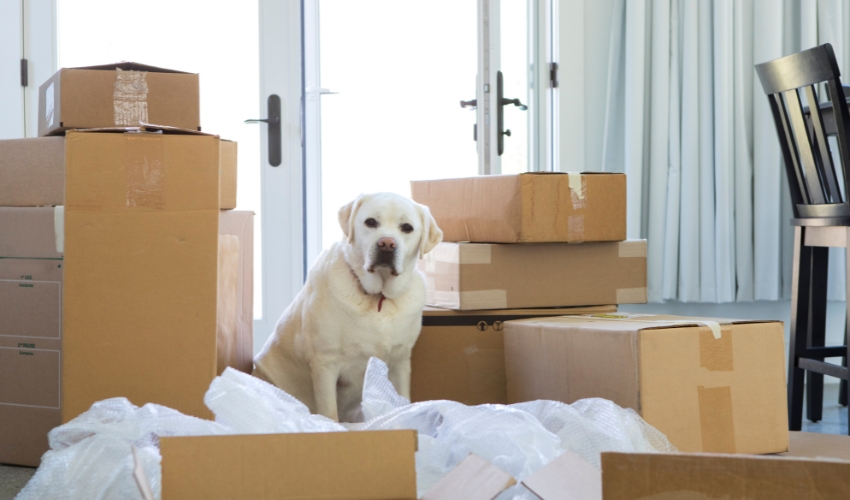Millions of people throughout the world adore chocolate, which is prized for its decadent texture and deep flavor. Beyond its delicious flavor, though, there could be a risk for our animal friends. While chocolate is safe for people to consume, it can be poisonous and pose major health hazards to dogs, cats, and other pets. It is essential for responsible pet ownership to comprehend the mechanisms underlying chocolate toxicity, its impact on animals, and the necessary actions to prevent harm. In this article, we will examine the various components that can be harmful to pets and delve into the complex details surrounding chocolate’s toxicity. We will also look at the physiological reactions that animals can have after ingesting substances, which can range from minor symptoms to serious illnesses. We will also go over the significance of receiving emergency veterinary care in cases of chocolate consumption and offer suggestions for guarding against unintentional chocolate exposure in pets.
Through highlighting the risks associated with chocolate toxicity and stressing the importance of pet safety precautions, our goal is to provide pet owners with the necessary knowledge to shield their cherished friends from the possibility of chocolate toxicity.
What ingredients or components of chocolates are harmful to dogs?
Theobromine and caffeine are the two main chemicals in chocolate that are bad for dogs.
- Theobromine: Cocoa beans, which are used to make chocolate, contain the stimulant chemical theobromine. Dogs are especially vulnerable to theobromine’s harmful effects since they metabolize it far more slowly than humans. Dogs’ central nerve system, cardiovascular system, and gastrointestinal system are the main organs impacted by theobromine. Increased heart rate, restlessness, vomiting, diarrhea, muscle tremors, seizures, and in extreme circumstances, even death, are some of the symptoms that it might induce.
- Caffeine: Another stimulant that might be harmful to dogs is also present in chocolate. Even while there is less caffeine in chocolate than theobromine, it might still be hazardous in its overall toxicity. Similar to theobromine, caffeine is a central nervous system stimulant that can cause tremors, convulsions, hyperactivity, high heart rate, and, in severe cases, cardiac arrhythmias.
Theobromine content varies amongst chocolate varieties, but generally speaking, the more bitter the chocolate, the more toxic it is to your dog.
As a general reference based on the website of Sydney Animal Hospitals:
- The least amount is seen in white chocolate, which has about 0.25 mg per 28 grams.
- Each 28 grams of milk chocolate has 44–58 mg.
- A 28-gram bar of dark chocolate has between 130 and 450 milligrams in it.
What are the symptoms of chocolate toxicity?
The type and quantity of chocolate consumed, together with the dog’s size and overall health, can all affect the signs of chocolate toxicity in dogs. Usually appearing a few hours after consumption, symptoms can include:
- Vomiting
- Diarrhea
- Increased thirst and urination
- Restlessness or hyperactivity
- Panting
- Elevated heart rate (tachycardia)
- Abnormal heart rhythm (arrhythmia)
- Muscle tremors or twitching
- Seizures
- Increased body temperature (hyperthermia)
- Difficulty breathing
- Weakness or lethargy
- Collapse or coma (in severe cases)
It’s crucial to remember that symptoms might vary based on the type and quantity of chocolate consumed, the size and condition of the dog, and the possibility of life-threatening cardiac and neurological issues. It’s critical to get your dog into the doctor right away if you think they may have eaten chocolate or if they are exhibiting any of these symptoms. Prognosis can be significantly improved, and major complications can be avoided with early management.

What can you do to reduce risk of your fur baby ingesting chocolates?
Reducing the risk of dogs ingesting chocolate involves taking proactive measures to keep chocolate out of their reach and educating yourself and others in your household about the dangers of chocolate toxicity for dogs. Here are some steps you can take:
- Chocolate should be stored safely. Store all chocolate and anything containing chocolate in a place where your dog cannot reach it, such as cocoa powder, cocoa beans, chocolate bars, cookies, cakes, and candies. Put away your pets by using high shelves, childproof-locked cabinets, or other items they can’t open.
- It is important to properly dispose of chocolate wrappers and packaging since dogs are drawn to the scent of chocolate. Put them in a sealed trash can that your dog cannot open.
- Inform family members and guests: Ensure that all members of your home and guests are aware of the risks associated with chocolate poisoning in dogs. Stress the value of keeping chocolate out of reach and avoiding purposeful feeding of pets.
- Watch your dog: Be mindful of your dog’s behavior, particularly on holidays or other special occasions when chocolate consumption is more prevalent. If there is chocolate around, make sure your dog can’t get to it.
- Offer substitute sweets: Give your dog safe and wholesome treats in instead of chocolate. Dog-safe materials can be used to produce homemade treats, or there are plenty of dog-safe treats on the market.
- Gift baskets and seasonal décor should be handled with caution as they frequently include chocolates or chocolate candy. When bringing these things inside your house, take caution and make sure your dog cannot get to them.
You may lessen the chance that your dog will consume chocolate and shield them from the potentially dangerous consequences of chocolate toxicity by putting these preventative steps into practice.













